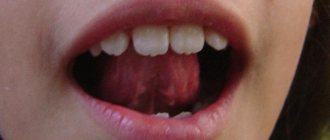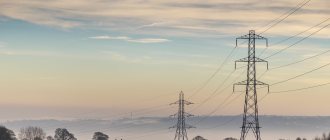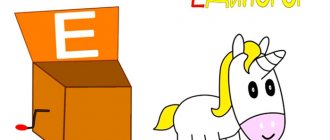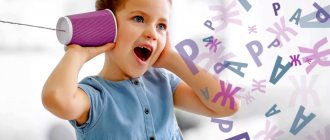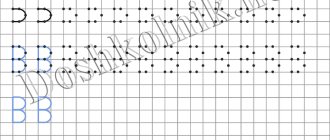Summary of a literacy lesson “The first sound in a word” For children 5-6 years old
Lesson notes
"The first sound in a word"
for children of a general developmental group, aged 5 to 6 years
Date of:
Educational area
: Speech development
Class:
Literacy training
Priority
: Speech development, integrated with physical development, social – communicative development, cognitive development.
Target:
Tasks:
Educational:
— Strengthen children’s understanding of words.
— Strengthen the ability to intonationally highlight sounds in a word, distinguish between hard and soft consonant sounds by ear, and identify the first sound in a word.
Educational:
— Develop phonemic awareness.
— Develop memory, attention, speech breathing.
Educational:
—
Cultivate cognitive interest in the Russian language.
— Develop the ability to listen carefully to the answers of your comrades.
- Encourage activity in class.
Preliminary work:
Forms of work:
Individual and joint activities of the teacher with children.
Methods:
Verbal
: questions for children, warm-up with “tongue”, game “Tell me like me”, “Say the word”.
Visual
: toy – Dunno, pictures depicting objects with hard and soft sounds (lemon, pyramid, lamp, cherry, wolf, steamboat)
Practical
: physical education minute.
Types of children's activities
: gaming, communicative, motor.
Individual work:
Say words with the child, focusing on the sound.
Materials and equipment:
Demo material:
toy - Dunno, pictures depicting objects with hard and soft sounds (lemon, pyramid, lamp, cherry, wolf, steamboat), ball, chips (figures from Kinder Surprise).
Handouts: h
mirrors, chips (for each child).
Motivation:
help Dunno.
Progress of the lesson:
I. Introductory part
Motivational moment:
Educator
: Guys, Dunno came to visit us. Malvina gave him the task of determining where the sounds are in words, and asks you to help him. Well, can we help? (children's answers) But before we start helping Dunno, let's stretch our tongue a little so that we can do the tasks that Malvina gave to Dunno well.
Articulation gymnastics.
The tongue woke up, everything around was dark and scary. He began to look for a way out. I tapped on one cheek, but on the other, it won’t open. At this time, the mouth yawned and opened. The tongue saw a way out and headed towards it, but the teeth did not let it through, but began to bite quietly. The tongue hid behind the teeth. But the teeth did not stop and continued to chew. They chewed their lower lip a little and then their upper lip. The lower lip is offended ( protrude the lower lip
). The tongue thinks: “Why are the teeth so angry?” I decided to wash my teeth with my tongue. First I washed my upper teeth and then my lower teeth. The teeth looked in the mirror and said: “Oh, how clean! Thanks tongue. We won't bite you anymore."
Educator
: Well done everyone! Well, now it’s time to help Dunno.
II. Main part.
Educator
:
Children have 5-6 chips on the table.
Guys, I suggest you “collect” different words in a box.
To do this, you need to remember a word, for example - flower, and put a chip in the box. ( Children name their words and “put” them in a box, with which the teacher walks between the rows. Then he selects the brightest ones in sound (“resonant” - bell, mirror, “quiet” - mouse, cone, “loud” - thunder, tomato)
and invites you to listen to their sound.
Educator
:
Game "Tell me how I am."
You guys stand in a circle, and I stand in the middle with the ball.
The game is that I will throw the ball to one of you, naming a word with intonation highlighting any of the consonant sounds (rruka, plane, trubba, knife, domm, etc.)
You must repeat the word as you pronounced it me throwing the ball back.
Educator
: (
pictures depicting a lemon, a cherry, a pyramid, a lamp, a wolf, a steamboat are displayed
on ) I suggest you guys say the word lemon so that everyone can clearly hear the first sound - limon.
What is the first sound in the word limon? - “l”. The sound L is a little brother, but what is his big brother? - “l”. What word begins with the sound L? - Llampa. ( The teacher takes pictures with a lemon and a lamp from the flannelgraph).
I suggest you listen and then say what sounds the words in the pictures begin with.
Look at this picture, what is drawn on it is a pyramid, and say this word so that the first sound is clearly heard. The child emphasizes the sound “p” with his voice. ( Then similar work is carried out with other pictures).
Physical education minute
Our Dunno reached out.
Hands on hips and bent over.
He stood up, sat down and stood up again.
He stood up lightly on his toes.
And he sat down quietly at the table. ( children perform movements in accordance with the text
).
Educator
:
Game “Say the word ”. Children, on the instructions of the teacher, name words with the sound “p”. When 10-15 words , the task changes: children name words with little brother “p’”. For each correct word, children receive a chip . At the end of the game the winner is determined .
III.Final part
Educator:
Guys, who did we help today? Why did we help him?
Educator
: Well, Dunno, now you understand how to distinguish sounds at the beginning of a word.
Guys, now I invite you to go outside and play your favorite games.
⇡#Music of celestial bodies
Record label owners often talk about how damaged the music industry is today. Everything is wrong for them - the MP3 format has practically destroyed audio discs, and file-sharing networks are depriving them of profits, and radio stations do not make royalties for the use of music content. There is some truth in their words, although this issue is very, very controversial. Fans will always buy compositions by a good performer and in any format. Moreover, if the recording on the disc is unique, then it can arouse interest even among those who do not listen to music at all.
And here's an example - the National Aeronautics and Space Administration (NASA) contributed to the release of CDs with unusual music - space melodies performed by the cosmos itself and its celestial bodies.
To obtain “cosmic music”, scientists used several techniques. First, they used recordings of sound vibrations of charged particles that arose as a result of the interaction of the planet’s magnetosphere with the solar wind. In addition, the “voice” of the magnetosphere itself and the noise of the electromagnetic field in space were recorded. Electronic sensors also recorded the reaction of radio waves that were “trapped” and repeatedly reflected between the lower layer of the atmosphere and the planet itself. The “cosmic music” was also based on recordings of the process of emission of charged particles from the rings of some planets.
Most of the tunes that have been recorded on music CDs are processed data received from the legendary Voyager-1 and Voyager-2. These spacecraft, launched in 1977 as part of a project to study the distant planets of the solar system, still continue to amaze humanity.
⇡#Spacesounds navigator - space music
In the Solar System, as well as throughout the Universe, cosmic music sounds. Planets, comets, stars talk - to hear them, you just need to know where, how and what to listen. Sometimes the audio looks like chaos, sometimes it resembles the creations of famous experimentalists in electronic music, like Kraftwerk. Such cosmic sounds inspired the authors of the spacesounds.com project to create the Spacesounds navigator - an interactive map of sounds in the Solar System. You can view it online or download it to disk as a Flash application. It is enough to select an object of the Solar System on this map, and you will immediately hear the sounds it produces, recorded by spacecraft.
⇡#Sunny accent
This melody was recorded by the SOHO spacecraft, whose main task was to study the Sun. Its name stands for Solar and Heliospheric Observatory (“solar and heliospheric observatory”). In addition to various complex equipment, including ultraviolet radiation flux sensors, a Doppler shift meter, a wide-angle spectrometric coronagraph, an ultraviolet telescope and other instruments, the device is equipped with a device for observing low-frequency global oscillations of the Sun. It was with his help that we were able to record this audio file. It shows how atmospheric circulation inside the Sun produces very low-frequency sound.
A whole series of similar sounds was published on his university page by Stanford University scientist Alexander Kosovichev.
Summing up: how to improve English pronunciation yourself
- Short /ɪ/ is wider than ours: the tongue is pulled back more strongly, the back of the tongue rises, but lower; the mouth is more relaxed (almost like for our E); the sound is shorter. A bit reminiscent of the Russian sound IE, as in the word h e
tyre. - Long /i:/ is also wider than ours (but not as wide as short ɪ), and longer than ours. Mouth in a “smile” position. This is a diphthongoid sound: the back of the tongue slides forward and upward during pronunciation, so the “overtone of two sounds” is heard.
- The sound /e/ is shorter and more closed than ours: the middle back of the tongue rises higher to the palate and moves more forward, the jaws are placed closer to each other.
- The unstressed neutral sound “shva” does not need to be pronounced like the Russian / e /. It is pronounced in a completely relaxed position: the tongue is in the middle, the mouth is not tense. The analogue in Russian is post-stress and 2nd pre-stress A, O or E.
⇡#Flute in space: the first space duet
Heavenly sounds frighten, fascinate and evoke thoughtfulness. But the musical value of such a compilation, frankly speaking, is small. And here we completely agree with Mark Whittle’s statement that the Universe is not the most beautiful musical instrument. It is much more pleasant to listen to ordinary earthly music invented by man. And if you play it in space, it will also be “cosmic” in its own way.
NASA astronaut Catherine Coleman, while in Earth orbit, aboard the International Space Station, together with the famous musician Ian Anderson, founder of the rock band Jethro Tull, played the classical composition Bourree by Johann Sebastian Bach on the flute in 2011. The founder of the legendary group was on Earth at that time, on tour in Perm.
Ian and Catherine dedicated their performance to Cosmonautics Day and the 50th anniversary of the first manned space flight. Apart from the cheerful impromptu of the ancient song The Fountain in the Park (I was strolling on the Moon one day), which was performed by astronauts Harrison Schmitt and Eugene Cernan during their walk on the Moon, the Coleman-Anderson duet can be considered the first professional space performance.
⇡#"Cassini-Huygens": winds and lightning from other planets
When the Cassini-Huygens spacecraft (comprising two modules, the Cassini station and the Huygens probe) was launched on October 15, 1997, not everyone believed that its mission would be successful. Just think - the device had to cover 1.4 billion km, reach Saturn and carry out a soft landing of the probe on the surface of one of its satellites - Titan. And so on January 14, 2005, almost 17 years after the start of the flight, the Huygens probe successfully descended to the surface of Titan and even managed to transmit its image.
At the time of descent, as well as after the “titan landing,” acoustic sensors were working on board the Huygens probe, which were able to record the noise of the alien wind.
A recording of the sounds of Saturn itself was also made. It is impossible in principle to carry out a similar landing of a device on this planet, since it is a gas giant and does not have a solid surface. However, by listening to radio frequencies, researchers found that lightning strikes often occur on this planet during storms and storms. The Cassini spacecraft made it possible to record them using sensors in the form of signals at frequencies up to 16 MHz. By condensing the time scale, scientists made an audiovisual presentation of these phenomena. What came out of this is shown in the video below.
The inclusions on the graph are markers that mark a surge in radiation caused by thunderstorms on the sixth planet from the Sun.
⇡#Voyager-1: farewell sounds
Among astronomy lovers, there are even some kind of music lovers who collect recordings of sounds that have come to us from the depths of space. One of them is Donald Gurnett, a professor of physics at the University of Iowa. He collected an impressive collection of such recordings. True, he listens to them not only for pleasure. In 2013, at a press conference held by NASA, he played an audio recording, which, according to the professor, is irrefutable evidence that Voyager 1 left the solar system.
Both spacecraft were equipped with plasma wave receivers, which were once developed by specialists from the same university. The video below shows a spectrogram of waves (vertical axis is frequency, horizontal axis is time). It shows two events accompanied by an increase in frequency, which suggests an increase in the electron density. The sounds in this recording indicate a change in the plasma flow around the ship, which means that Voyager 1 still ended up in interstellar space.
Those who want to get acquainted with Donald Garnett's complete "record library" can do this by looking at the page of the university where he works.

